Underrated ground covers – 11 plants that will happily multi-task in bare, dry and shady spots, say gardening experts
Transform your yard with these overlooked and underrated ground cover plants


Getting to know underrated ground cover plants can prove a real game changer for your yard. Every plot has those less-than-lovely, tricky areas, that could do with greening up, but often we have to realise that our favorite blooms just won’t flourish there or simply look out of place.
That’s precisely where these hardworking, yet often underrated plants come in. While some thrive in dry shade and others adore full sun, they all need very little attention, once established, and can be happily left to do their thing apart from the occasional snip back of spent flower stem or over enthusiastic growth. Many demand little water, once their roots have settled and some can even help stabilise slopes and earth banks or prevent erosion.
While they may not be obvious garden divas, these ground hugging plants have their quiet charms often providing year round colour, enticing valuable pollinators or creating useful shelter for wildlife and amphibians.
11 underrated ground cover plants well worth knowing about
‘The true workhorses of the garden, ground cover plants can be responsible for knitting a design together, adding interest to the edges of borders and paths, and adding a pop of color or texture to cracks and crevices where other plants might perish,’ says High Country Gardens representative Lauren Carvalho.
‘They can often suppress weeds, retain soil moisture, and keep underground temperatures cooler.’
Goldmoss stonecrop
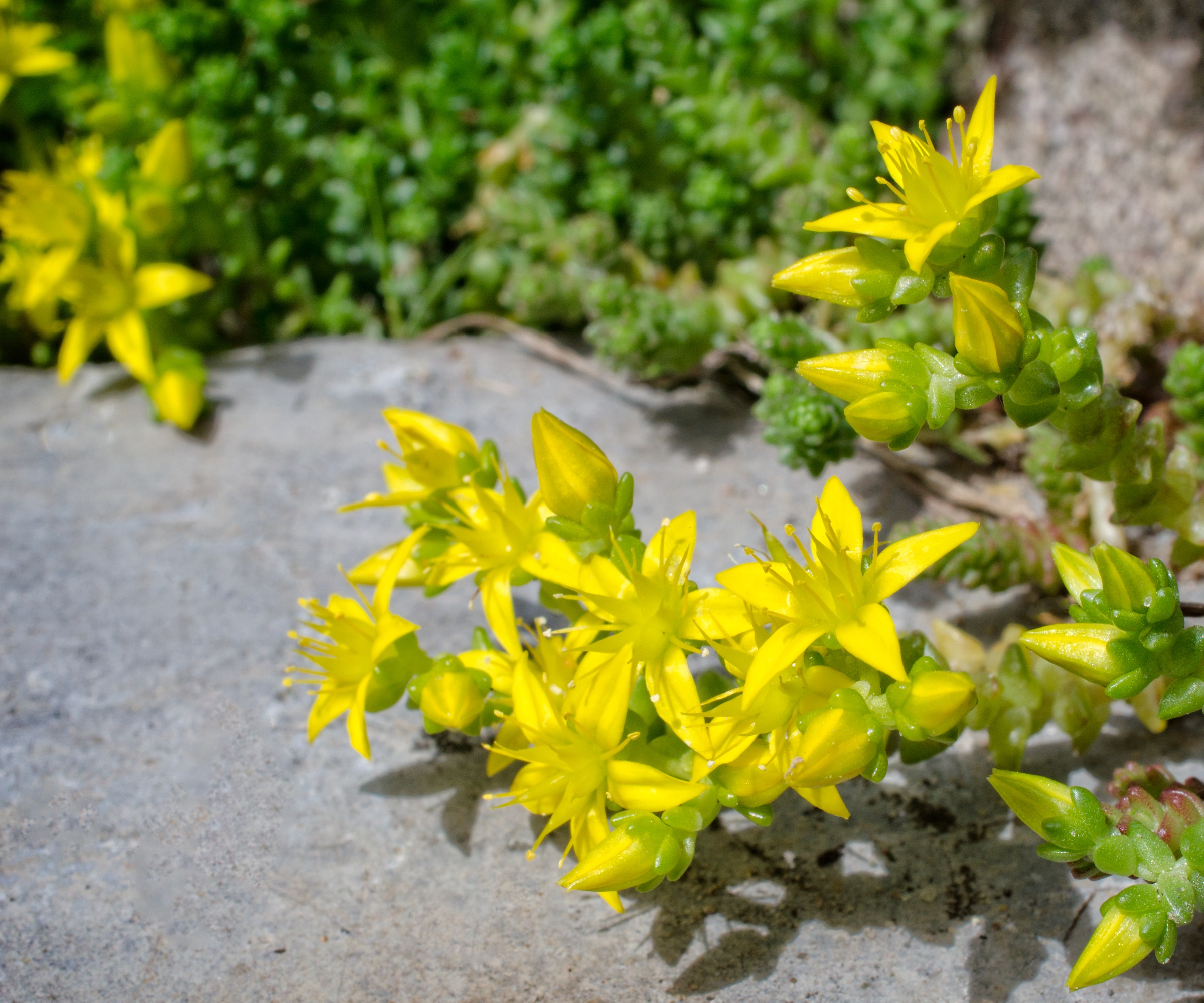
Evergreen and sun loving, goldmoss or biting stonecrop carpets large areas with its mass of vibrant fleshy leaves. Producing bright yellow star-like blooms from May to July, this tough and fast-growing ground hugger puts on a fantastic display for no effort.
‘Sedum acre is a cheery, low growing perennial that gives early season food for pollinators,’ says landscape architect Stacilyn Feldman. ‘It does a great job of filling in small gaps in loose paving and brings a pop of color to the ground plane with its yellow blooms and deep green leaves.
Design expertise in your inbox – from inspiring decorating ideas and beautiful celebrity homes to practical gardening advice and shopping round-ups.
Reaching just 3 inches (7cm) tall and 12-24 in. (30-60cm) wide it’s one of the most useful ground cover plants and the perfect lawn substitute as it will thrive in poor soils with little moisture. Suitable for USDA zones 3-8, encourage it to sprawl between paving, over rocks and dry gardens or cascade down steps and walls.
Ruddy Clover
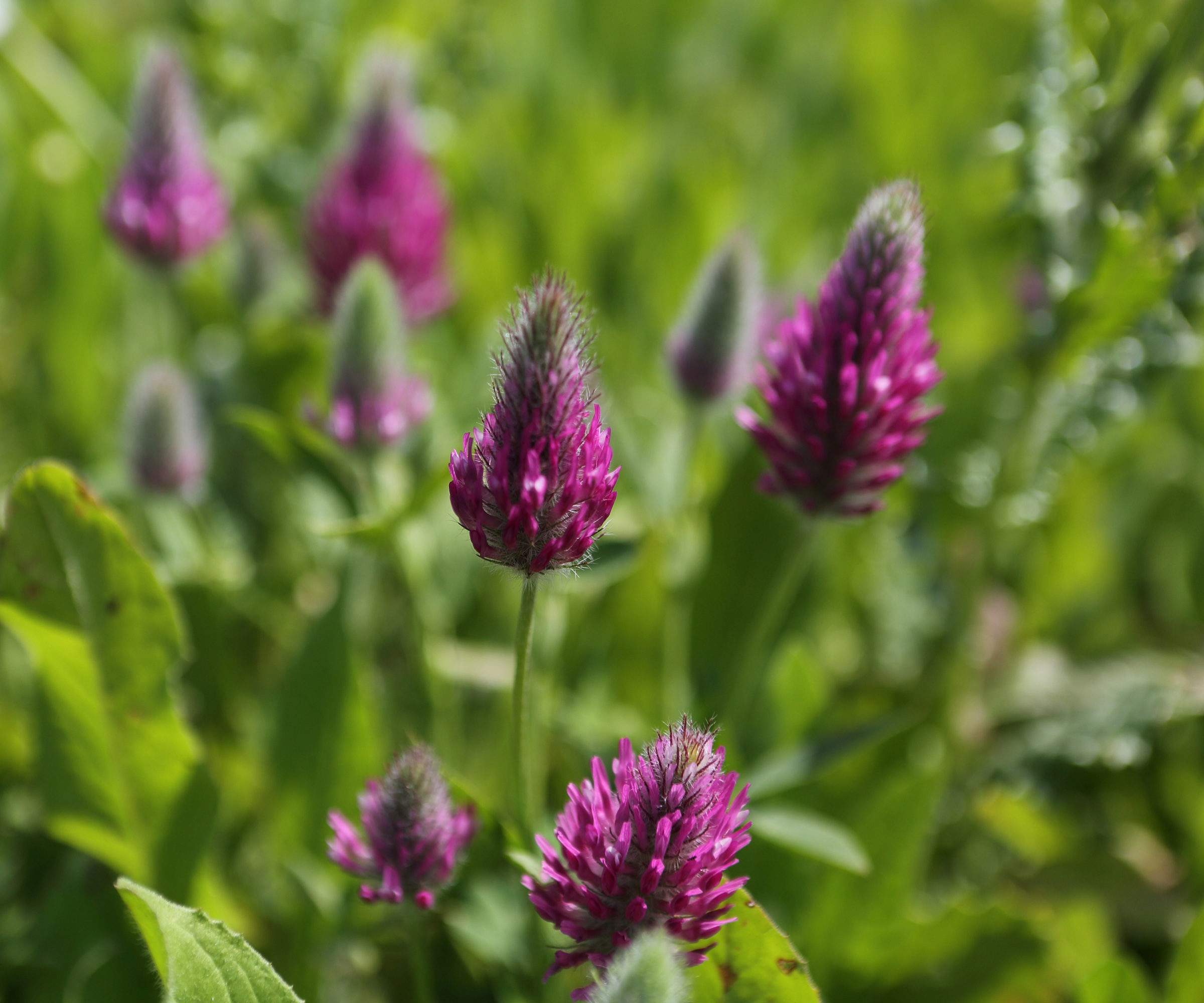
A beautiful but underappreciated perennial that will draw beneficial insects and pollinators from far and wide.
Trifoliate, blue-grey leaves with a soft, downy surface create the perfect foil for conical magenta-red blooms that first emerge in summer from eye catching silvery buds.
Trifolium rubens, also known as ruddy clover, thrives in moist, well drained soil in a sunny spot. A fast growing ground cover favorite, reaching 24in(60cm) with a spread of 16 in(40cm), ruddy clover can cover a wide area pretty quickly, making it the perfect addition to naturalized areas and meadowscapes.
Cut back spent blooms to encourage a second flush of flowers. This plant will die back in fall before emerging again in spring. Grow in USDA zones 4-9.
Christmas Fern
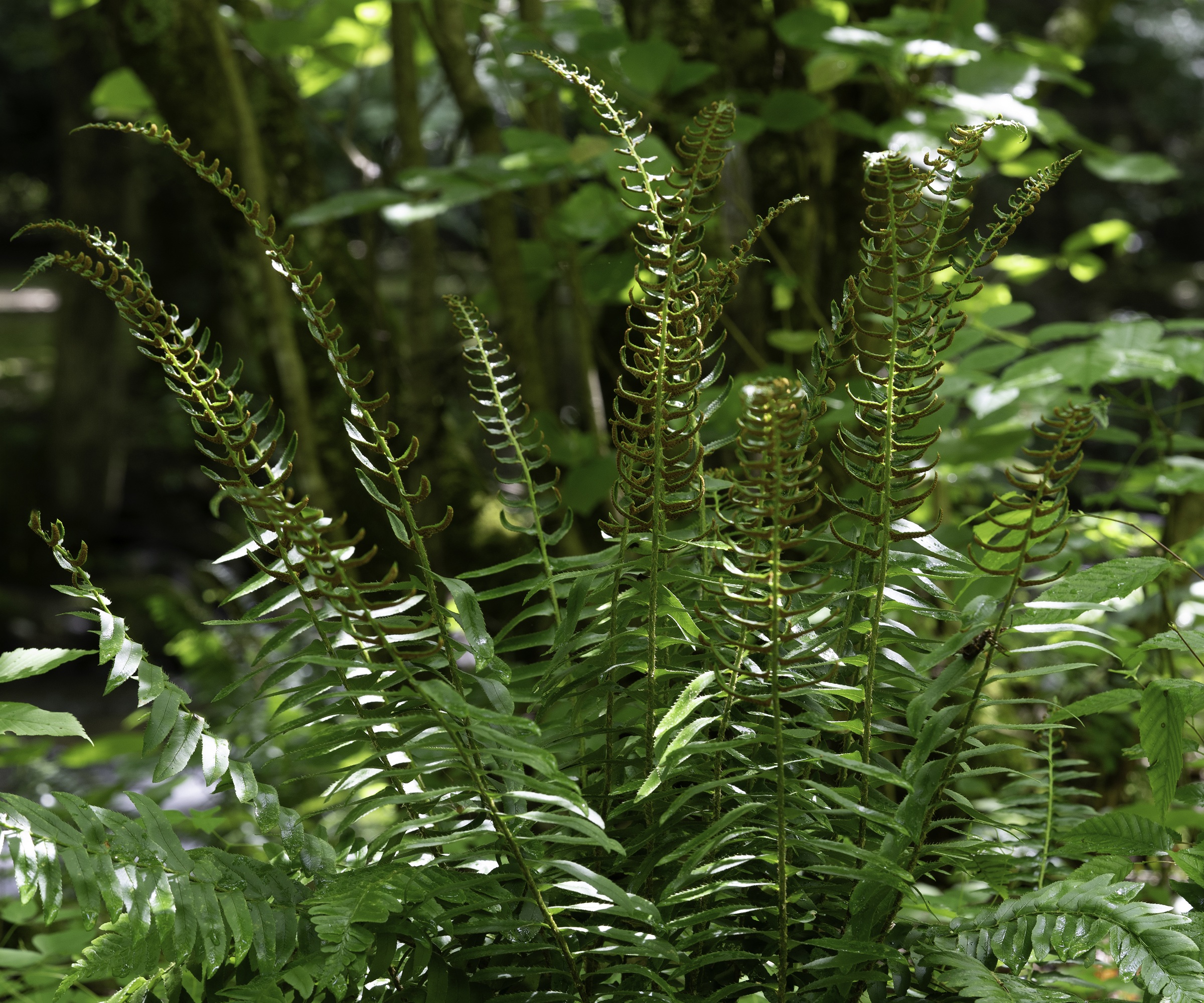
A ground cover plant with distinctive structure, this upright, clump-forming fern has an elegant fountain of dark green, textured fronds. Stretching up to 19-39 inches (50-100cm) and 19-39 inches (50-100cm) wide it adds interest and form to any shady (or part shady) spot.
‘If we’re in a woodland garden, Polystichum acrostichoides is a great evergreen ground cover that will stabilize a slope while holding the visual ground plane,’ says Stacilyn Feldman.
‘The overhanging frond structure of the plant creates shelter for small animals and insects on the forest floor, as well as nesting birds. It’s also a wonderful cut fern to bring inside for cheer after the traditional cutting plants have gone down for the season.’
Thriving in USDA zones 3-9 and a native of North America, this tough plant prefers dry or moist soils and is rabbit and deer resistant.

Stacilyn Feldman is a Principal at Oehme, van Sweden in Washington, DC. She has designed, managed, and shepherded over a decade’s worth of the firm’s landmark projects including green roofs, urban development, botanic gardens, and residential estates. Stacilyn holds a Bachelors of Landscape Architecture from The Pennsylvania State University.
Sweet Woodruff
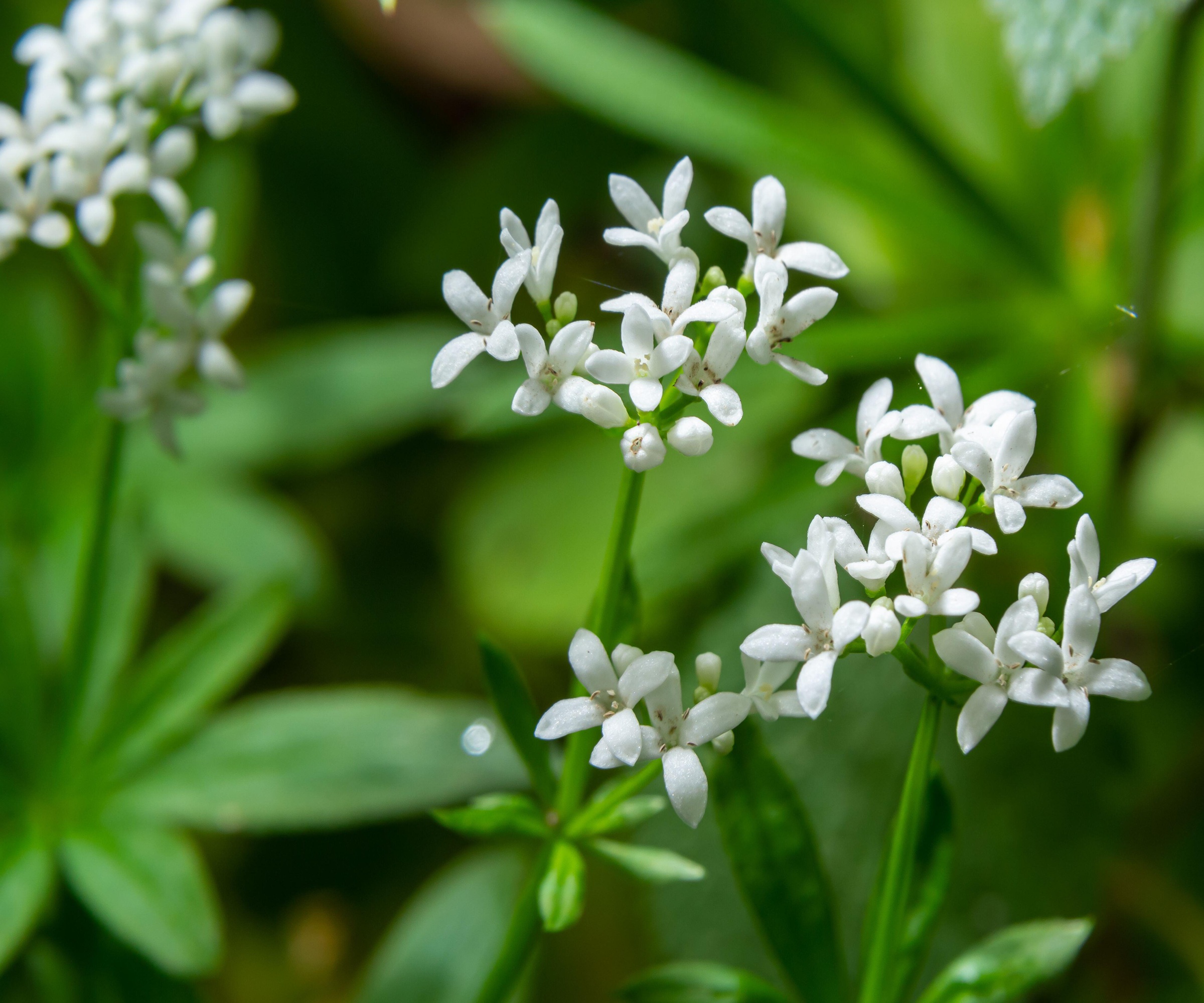
Knowing which plants will thrive in an area of dry shade is a common problem area for gardeners. Many of our favorite ground cover plants can be tricky to establish in these tough conditions, but there are a handful of beauties that will thrive.
‘Sweet Woodruff is a beautiful groundcover that is a wonderful option in shady locations that are dry. Oftentimes shade locations tend to stay moist but this variety works perfectly under trees, evergreens and rock gardens,’ says horticultural expert Katie Sunderlage.
‘They grow to about 12” tall and 18” wide. The foliage is an interesting whirl pattern that can add a lot of texture to a space and small, white, very fragrant blooms appear in spring.’
Perfect for naturalized planting and woodland gardens, these perennials spread via underground rhizomes, emerging in low growing, dense clumps of foliage.
Dying back each fall before reappearing in spring, Galium odoratum or Sweet Woodruff are among the best ground cover plants for shade and will quickly form a much-anticipated seasonal highlight. Suitable for growing in USDA hardiness zones 5-8.
Creeping Jenny
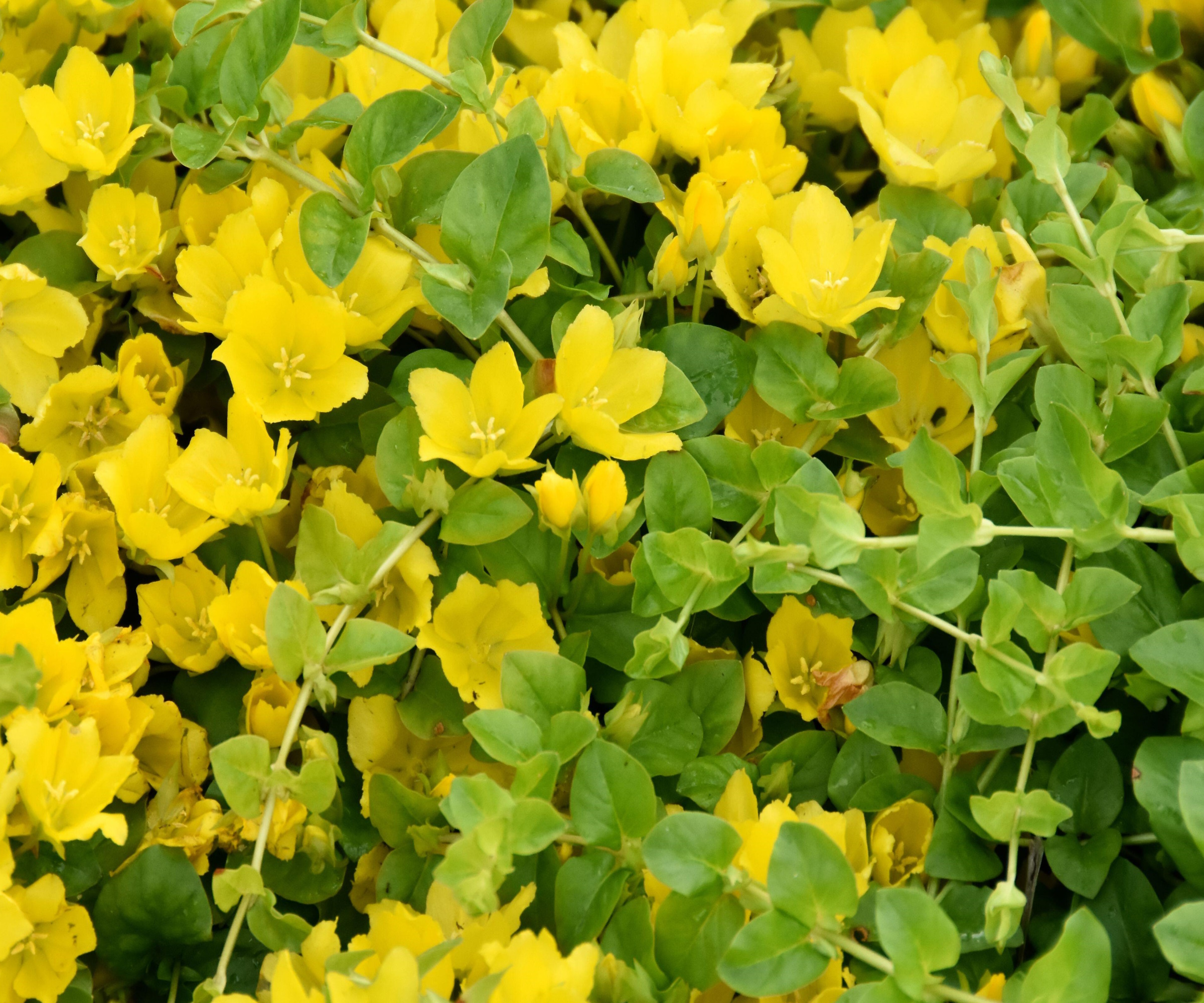
If there's one ground cover plant that is guaranteed to brighten up a dull area in your yard, it's creeping Jenny or Lysimachia nummularia.
With it's ribbons of vivid yellow-green foliage that creep over soil, amongst stones and paving, they add a cheery contrast to other foliage plants and offer valuable cover for wildlife too. Small yellow flowers in late spring add to the golden aura and attract plenty of beneficial insects.
A walkable ground cover plant for lesser used spots in your garden, it's also a useful foil for disguising unsightly pond edges and creating a popular wildlife pond. The vivid foliage also looks spectacular spilling down steps and tumbling out of containers.
Growing up to 4in (10cm) with a spread of 20in (50cm), this evergreen perennial thrives in part shade or full sun. It can be an invasive plant, but varieties ‘Goldii’ and ‘Goldilocks’ are less rampant and more contained. Suited to growing in USDA hardiness zones 3 to 9.

Operations Manager at Holland Group, managing the customer service department and purchasing. Katie has been in the green industry since 2005 in the Greater Milwaukee area, earning her degree in Horticulture in 2008. She has been able to share her love for plants working in multiple garden centers, in sales positions and most recently in an online retail platform at Holland Group.
Hardy Plumbago
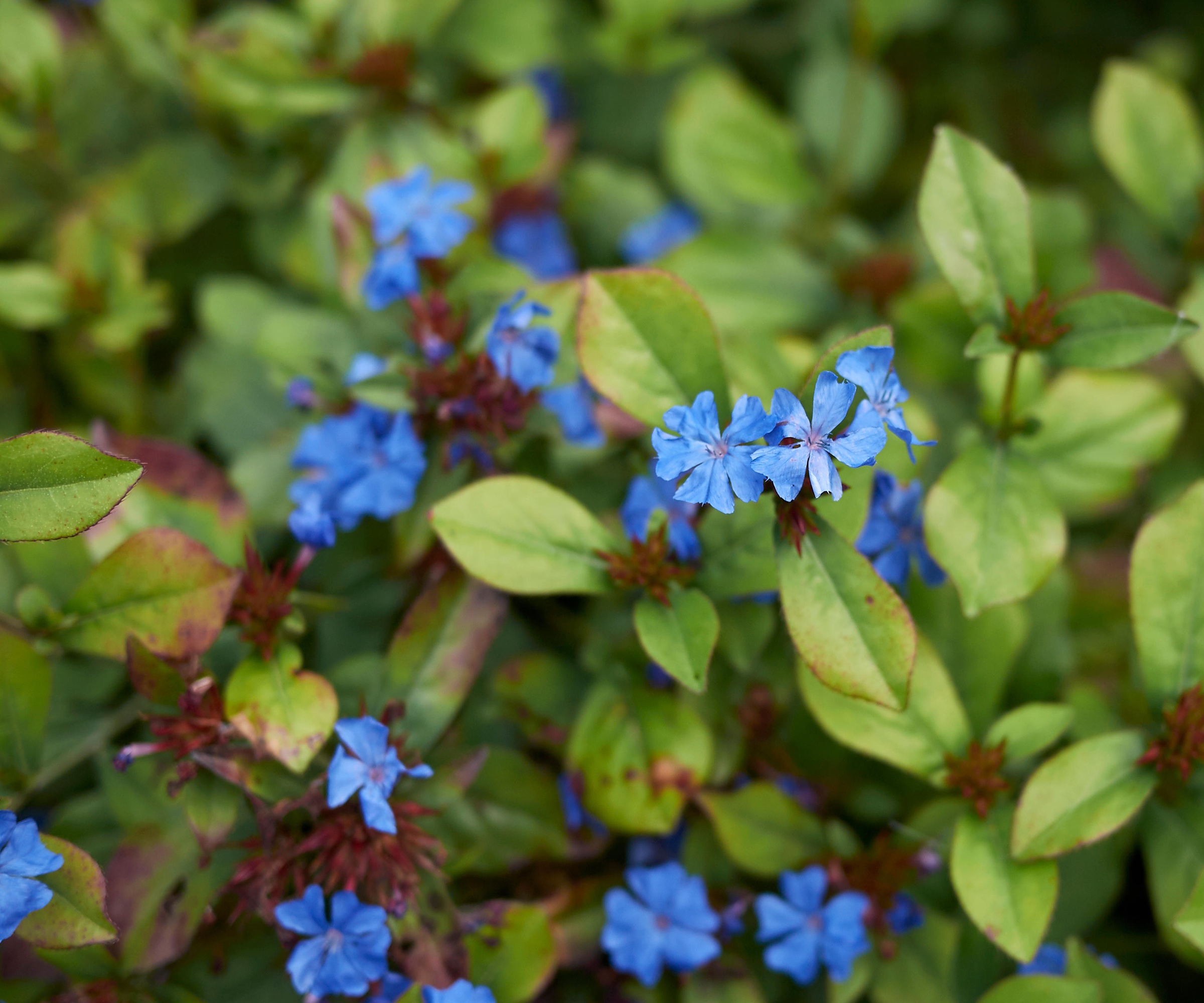
Hardy Plumbago
Hardy plumbago or Ceratostigma plumbaginoides, is one of those under-the-radar groundcovers that quietly does everything right.
Hardy plumbago thrives where many plants struggle, performing beautifully in sun or dry shade and even tolerating clay soils and moderate foot traffic.
It’s a standout choice for planting beneath trees or large shrubs in USDA zones 6-9, where grass fails and other groundcovers often fade.
A well-behaved ground cover plant, it helps to suppress weeds and stabilize soil while requiring very little maintenance in return. Drought-tolerant once established and virtually pest-free, it will reach up to 4-20 inches (10-50cm) and 4-20 inches (10-50cm) wide.
Juniper Leaf Thyme

Thymus neiceffii or juniper leaf thyme has intricate, needle-shaped foliage reminiscent of miniature juniper branches.
Its evergreen foliage provides year-round interest, but the real show begins in early to mid-spring, when it bursts into bloom with vivid pink flowers that absolutely dazzle.
Native to the high elevations of Europe, juniper leaf thyme thrives in cooler, shaded microclimates. It is ideal for east- or northeast-facing beds, shaded rock crevices, or the protected north side of large perennials.
Unlike more common thymes, it’s not suitable for hot, dry lowlands, but in the right location, it is long-lived, hardy, and surprisingly low maintenance. Growing to 1 inch (2.5 cm) in height and 8 inches (20cm) wide in USDA zones 4-9, it will form a loose mat of green-gray needle-like foliage over time.
This plant is particularly well suited to pairing with spring-blooming bulbs like Scilla siberica, creating early-season visual interest while also suppressing weeds and conserving moisture.
Turkish Speedwell

Quietly earning its place as a garden essential, Veronica liwanensis, commonly known as Turkish speedwell, is an evergreen groundcover ideal for tough climates.
It is a low-growing perennial and is one of the earliest bloomers of the season, providing vital nectar to pollinators, such as native bees, just as they emerge from hibernation.
Originating from the rugged mountains of Turkey, this tough beauty and fast growing plant with tiny blooms thrives in lean, well-drained soils and can take on roles from lawn substitute to ornamental groundcover between stepping stones. Growing to 2in (5cm) tall, with a spread of 18in (45cm), it is best suited to USDA zones 4-9.
It even tolerates foot traffic, suppresses weeds naturally, and is a magnate for wildlife.
Japanese spurge
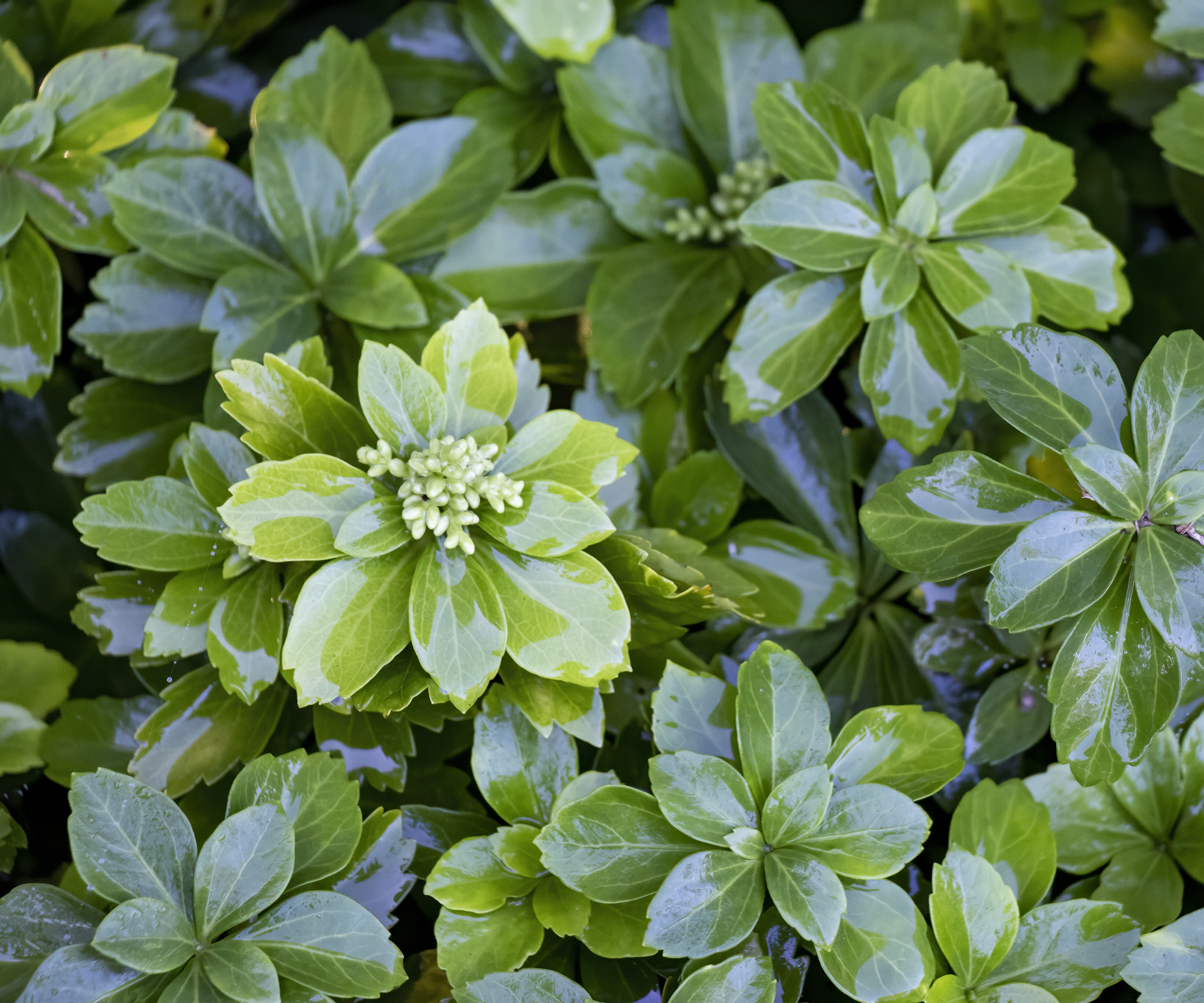
Tough, evergreen and, above all, a lover of dry shade, Japanese spurge or Pachysandra terminalis is a hardworking plant that every gardener should know.
Thriving in acid soil and fast growing, it's happy as an understorey plant beneath rhododendrons, azaleas and deciduous trees and shrubs. A true landscape designer favorite, it grows in areas of the yard other plants find challenging.
With loose rosettes of glossy, serrated leaves, and tiny white flowers that appear in May and June, this hardy perennial forms a dense and enchanting carpet that remains year round.
Reaching heights of 10in (25cm) and a spread of 24in (60cm), it needs little more than a trim back when it overgrows its allotted area. Will thrive in USDA zones 4-8, although there are a few varieties that will tolerate the cooler temperatures of zone 3.
Ajuga ‘Chocolate Chip’

A brilliant no-fuss ground cover plant, this gorgeous, glossy-leaved perennial establishes quickly in part sun or a shady spot. ‘Ajuga reptans forms thick mats that effectively block light to weeds,’ says Kelly Funk, President of Jackson and Perkins plant nursery.
‘Early spring flower spikes are rich in nectar, while the vigorous roots help stabilize banks and slopes. The beautiful bronze-toned foliage offers four-season interest. Allow it to naturalize for a low-maintenance carpet effect.’
A dwarf bugle, this variety is available from American Meadows and reaches 4in (10cm) tall and spread anywhere between 0.5-4.5ft (15-145cm). It makes a great alternative to a lawn, thriving where grass cannot, and is relatively hard wearing too. Grow in USDA hardiness zones 3a-9b, it will tolerate temperatures as low as -40F (40C).
Sedum ‘Dragon’s Blood’
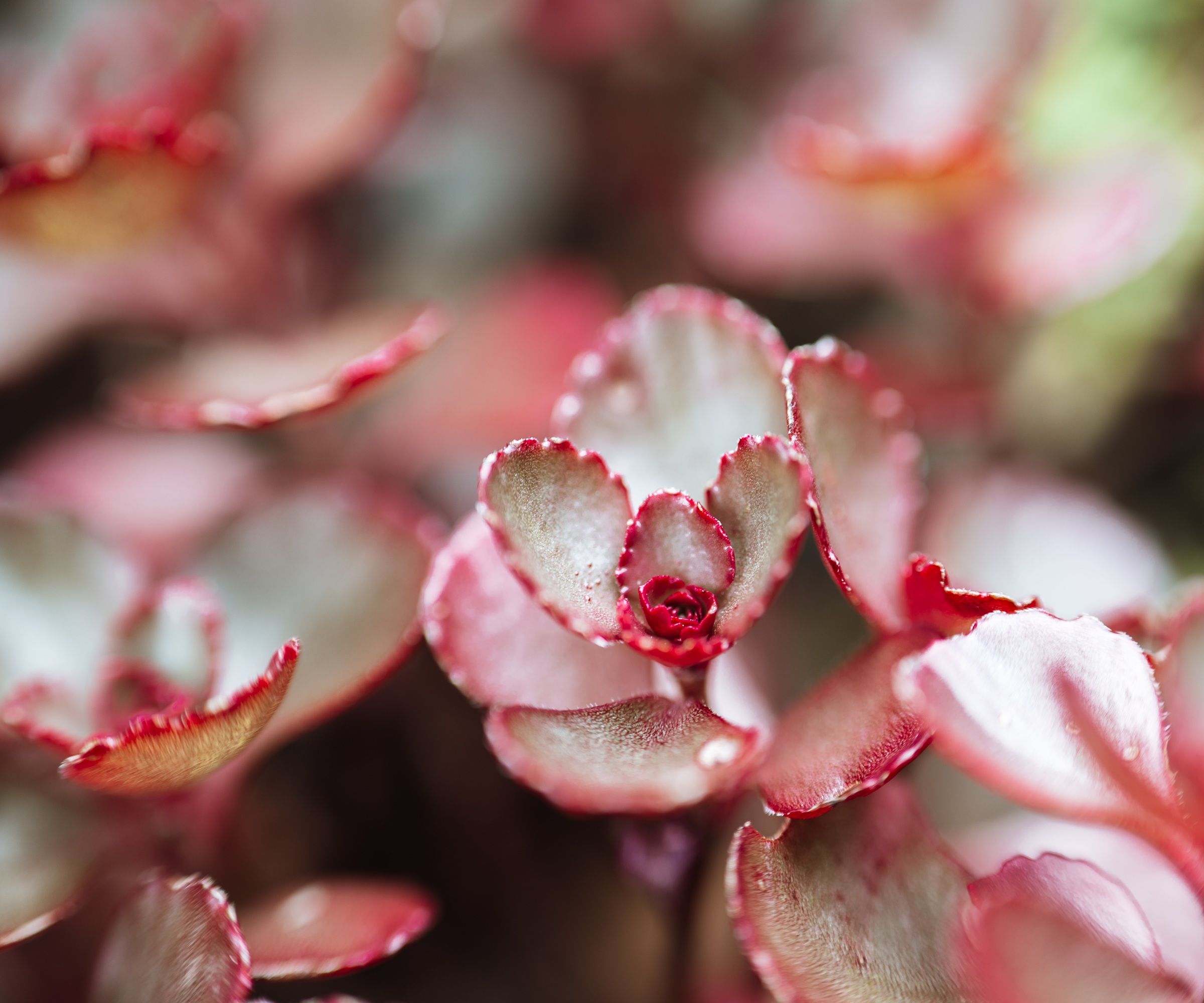
This low growing, creeping sedum has to be one of the most beautiful, offering year-round glossy, purple-tinged foliage topped with head turning deep red starry blooms in July and August.
Requiring next to no care, this perennial will thrive in well-drained soil in a sunny spot and looks stunning cascading over rocks, down walls and creeping between paving slabs.
‘Excellent for low-water gardens, Sedum spurium helps regulate soil temperature, and the late summer blooms feed bees when other flowers are fading,’ says Kelly Funk. ‘Use on slopes, rock gardens, or poor soils.’
Small but mighty, this variety will reach heights of 4in (10cm) and a spread of 16in (40cm) and is among the best plants to grow in a crevice garden. Ideal for growing in USDA zones 3-9, it is also known as Sedum spurium 'Schorbuser Blut' or Crimson Stonecrop. You can find a wide selection of sedum plants at Walmart.

Kelly is the president and CEO of Jackson & Perkins, a renowned online nursery with roots dating back to 1872 and a storied reputation for cultivating exceptional roses. A passionate gardener herself, Kelly brings hands-on knowledge and a deep appreciation for plants to her leadership. Under her guidance, Jackson & Perkins continues to thrive as a trusted name for gardeners who value beauty, quality, and the joy of growing.
Discovering underrated ground cover plants is an engaging and, slightly addictive, gardening habit. Satisfy your new found green-fingered curiosity with these underrated evergreens and underrated houseplants.

Journalist Jill Morgan has spent over 20 years writing and editing gardening, interior and property features. Titles she has worked on include The English Home, House Beautiful, Ideal Home, Houzz and Modern Gardens and she writes regularly for H&G as a Contributing Editor. Whilst she is a dab hand at renovation projects and DIY, she is happiest when out digging in the garden or planning a new border.
You must confirm your public display name before commenting
Please logout and then login again, you will then be prompted to enter your display name.